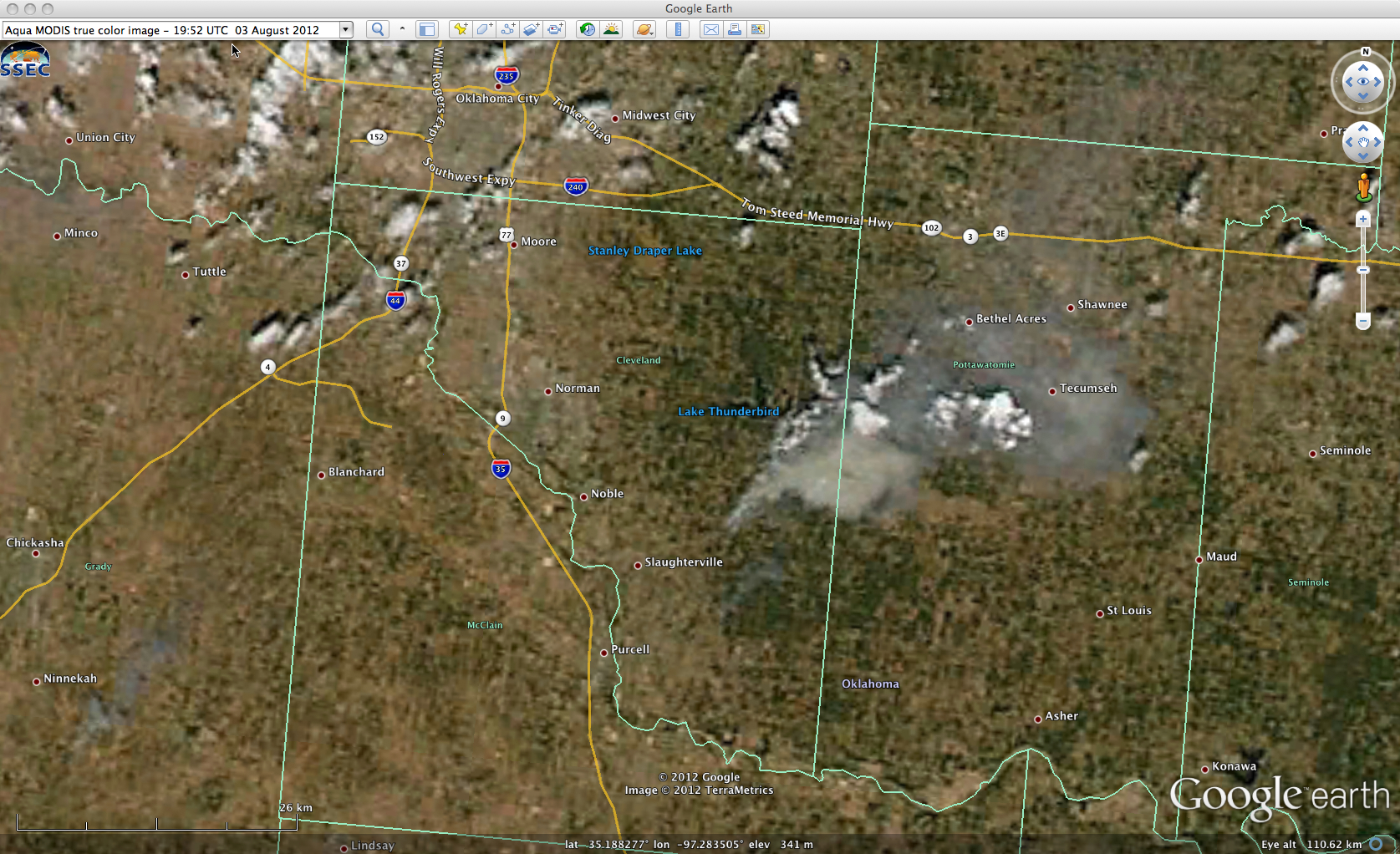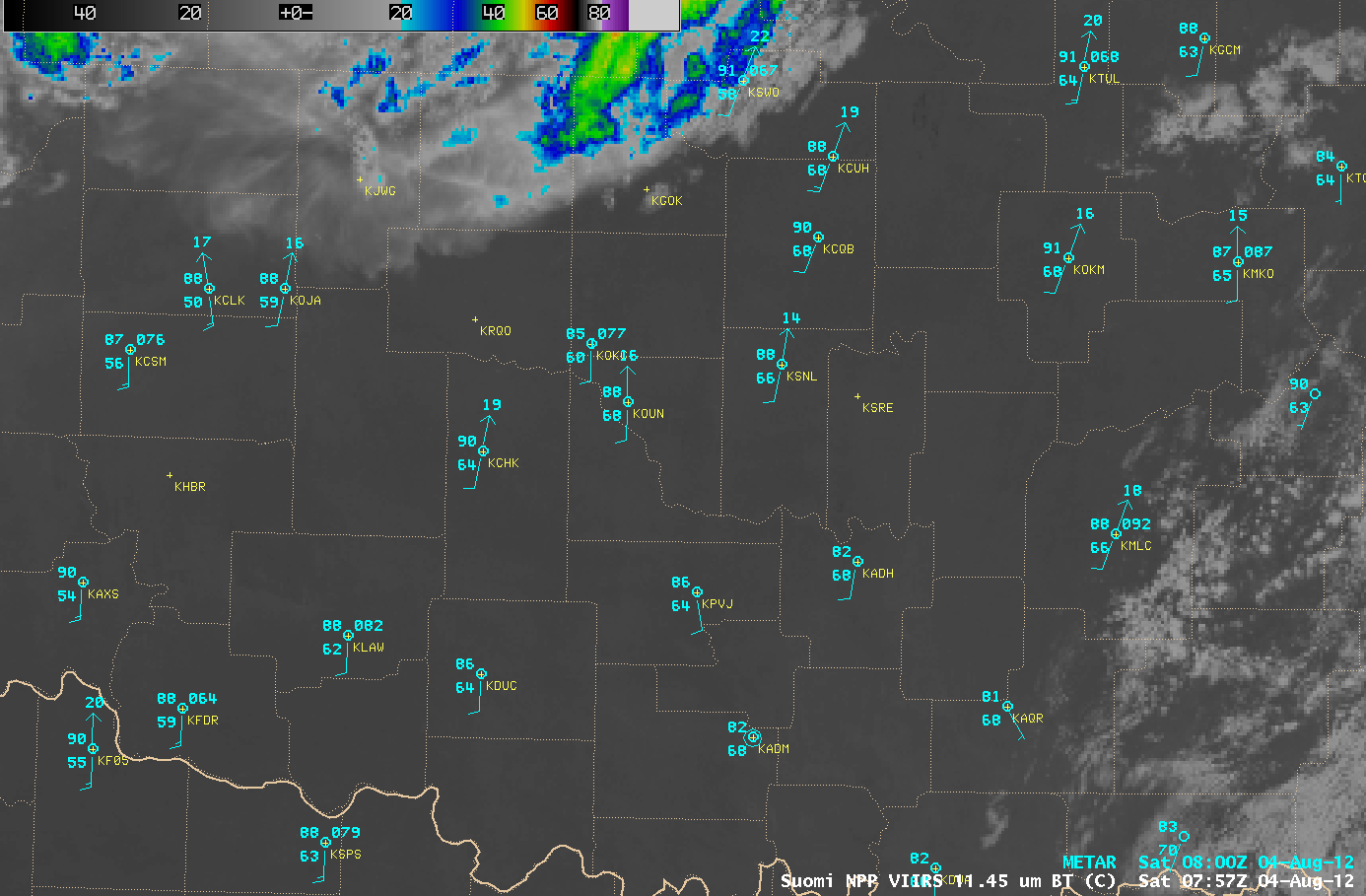Record high temperatures and wildfires in Oklahoma
A comparison of AWIPS images of 1-km resolution MODIS 0.65 µm visible channel data and the corresponding MODIS Land Surface Temperature (LST) product (above) showed nearly cloud-free conditions and very hot LST values of 120 – 140 F (darker red color enhancement) across much of southern Oklahoma at 19:48 UTC or 2:48 PM local time on 03 August 2012. On this particular day, two notable temperature records were set at Oklahoma City:
RECORD EVENT REPORT
NATIONAL WEATHER SERVICE NORMAN OK
1145 PM CDT FRI AUG 3 2012…NEW RECORD MAXIMUM TEMPERATURE SET AT OKLAHOMA CITY…
…NEW RECORD WARM MINIMUM TEMPERATURE AT OKLAHOMA CITY…TODAYS MAXIMUM TEMPERATURE AT WILL ROGERS WORLD AIRPORT IN OKLAHOMA CITY WAS 113 DEGREES. THIS BREAKS THE PREVIOUS RECORD MAXIMUM
TEMPERATURE OF 109 DEGREES, SET ON THIS DATE IN 2011.THIS ALSO TIES THE WARMEST MAXIMUM TEMPERATURE ON RECORD. THE RECORD WAS LAST REACHED ON AUGUST 11TH 1936.
THE MINIMUM TEMPERATURE OF 84 DEGREES IS ALSO THE WARMEST MINIMUM ON RECORD. THE PREVIOUS RECORD WARM MINIMUM OF 83 DEGREES WAS LAST REACHED ON AUGUST 13TH 1936.
TEMPERATURE RECORDS FOR OKLAHOMA CITY DATE BACK TO 1891.
The hot LST and air temperature values combined with dry fuels due to ongoing drought conditions created a very favorable environment for wildfire activity — and several fire smoke plumes were noted on GOES-13 0.63 µm visible channel images (below; click image to play animation). With the largest of the fires located east of Norman, Oklahoma (station identifier KOUN), a number of brighter white pyrocumulus clouds could be seen popping up through the lighter gray smoke plume.
The dense smoke plume from the Norman fire showed up very well on the 19:52 UTC (2:52 pm local time) Aqua MODIS true color Red/Green/Blue (RGB) image (below, displayed using Google Earth).
The large fire east of Norman continued to burn into the the following night, exhibiting a pronounced “hot spot†(black to yellow to red color enhancement) on the 07:57 UTC (2:57 AM local time) Suomi NPP VIIRS 3.74 µm shortwave IR image (below). The flames from this fire also had a distinct bright signature on the corresponding 0.7 µm Day/Night Band image.




